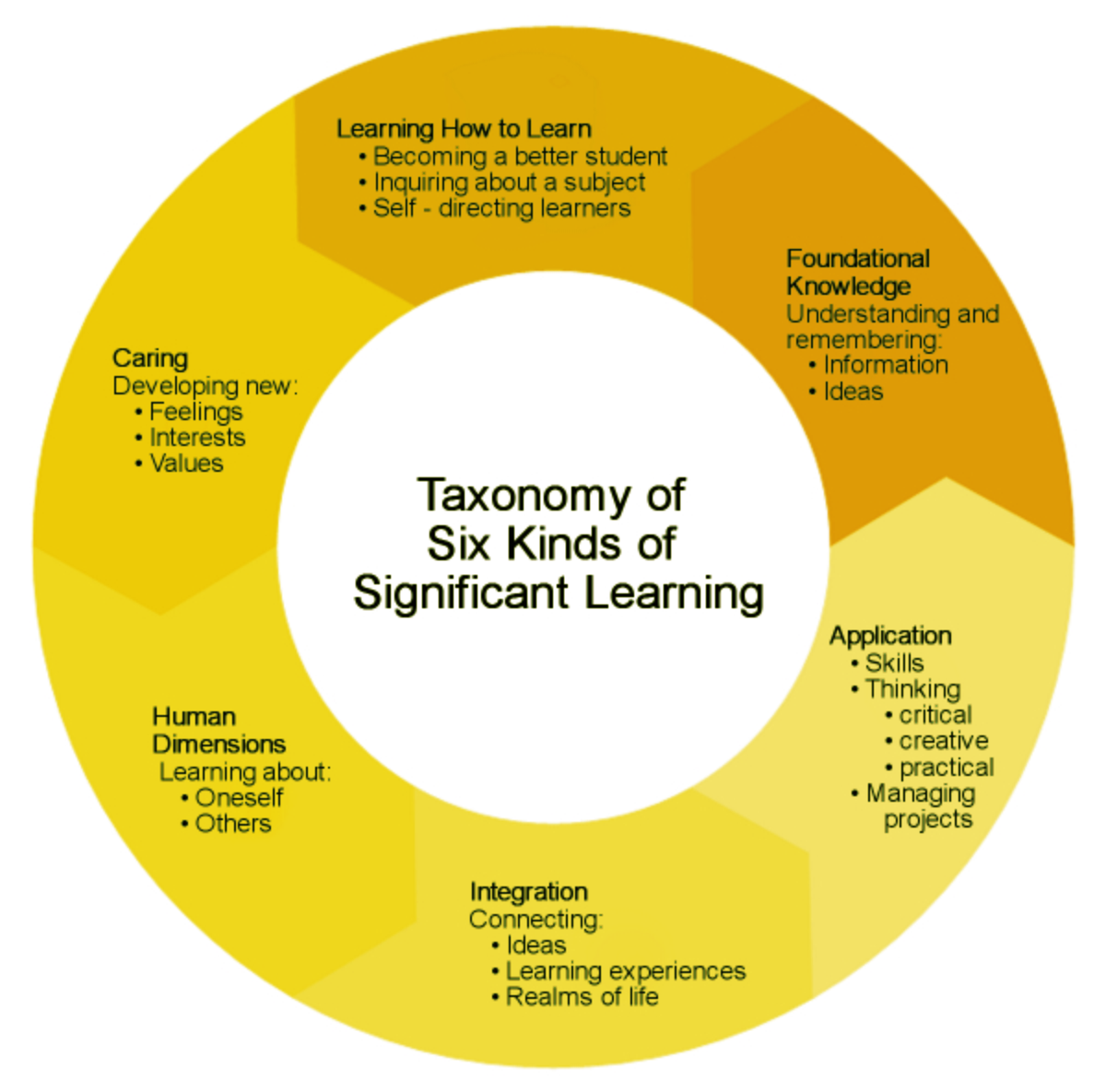Procedures of Assessing Different Kinds of Significant Learning: Some Possibilities
This learning is focused on preparing students to continue learning about a particular topic or subject after the course is over and even after they finish college.
Possible Assessment Procedures:
- Learning Assignments: Assign students to learn something new on their own; In an essay, they describe what they did to learn (how they learned) and what they learned.
- Personal reflections. Usually gathered after a learning activity or whole
course, these can be generated in writing, class discussions, online exchanges, learning portfolios, or even in SGIDs (Small Group Instructional Diagnosis). - Learning portfolios
- Performance in problem-based learning
In this kind of learning, you are trying to either get students to care about something new or in a new way, or to learn how to reflect on their existing values – as a result of their experiences in your course.
Possible Assessment Procedures:
- Personal reflections
- Standardized questionnaires, for example, about interests, attitudes, or values
- Learning portfolios
This has two aspects: the Personal Dimension (Self) and Social Dimension (Others)
Personal Dimension: Information about this dimension can be elicited in two basic ways:
- Personal reflections
- Standardized questionnaires, on factors such as self-confidence, can be done before and after an activity to measure any change.
Social Dimension: Information about this dimension can be collected in multiple ways:
- Information can be collected:
- from students themselves,
- from others, e.g., from other students on a team project.
- Learning portfolios can address both aspects of human dimension learning
This refers to learning in which students understand the connections or interactions between two or more ideas, learning experiences, or realms of life.
For example, this might mean having students identify the interactions or relationships between “X” and “Y”. Then assess the clarity and extent of what they have integrated.
This can be done via such activities as:
- Reflective writing
- Incomplete but progressive cases
- Concept maps
- Some portions of Problem-Based Learning apply here
- Interdisciplinary cases (using authentic problems if possible)
- Capstone projects
- Work on real life examples
Here, you want to know whether students can do whatever you want them to learn to do. Then you assess what they do, with clear criteria and standards. The assessment can be done via such things as:
- Simulations
- Demonstrations
- Team projects
- Explication activities (for example, in literature)
- Writing
- Some Classroom Assessment Techniques (CATs)
Here, you just want to determine if students “understand and remember” important concepts, terminology, principles, etc.
Possible Assessment Procedures:
- Traditional kinds of paper/pencil tests
- Drill and oral questions
- Some Classroom Assessment Techniques (CATs)
The below quick links will direct you to other PLU or external websites. Right click to open links in a new tab or use the browser back arrow to return to the Measurement of Student Learning page.
Questions or comments?
Please contact the Office of the Provost (253)535-7126 or provost@plu.edu



